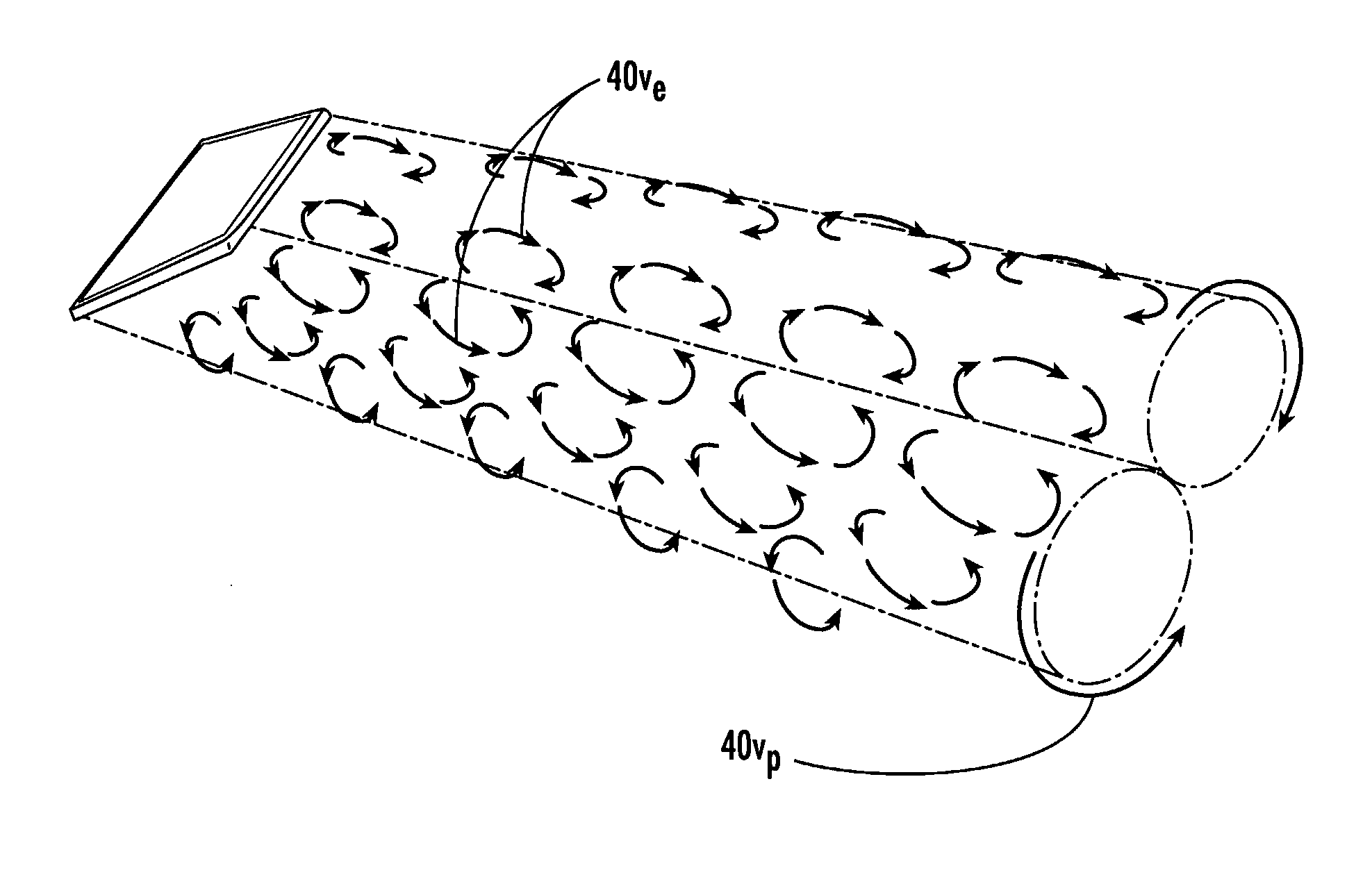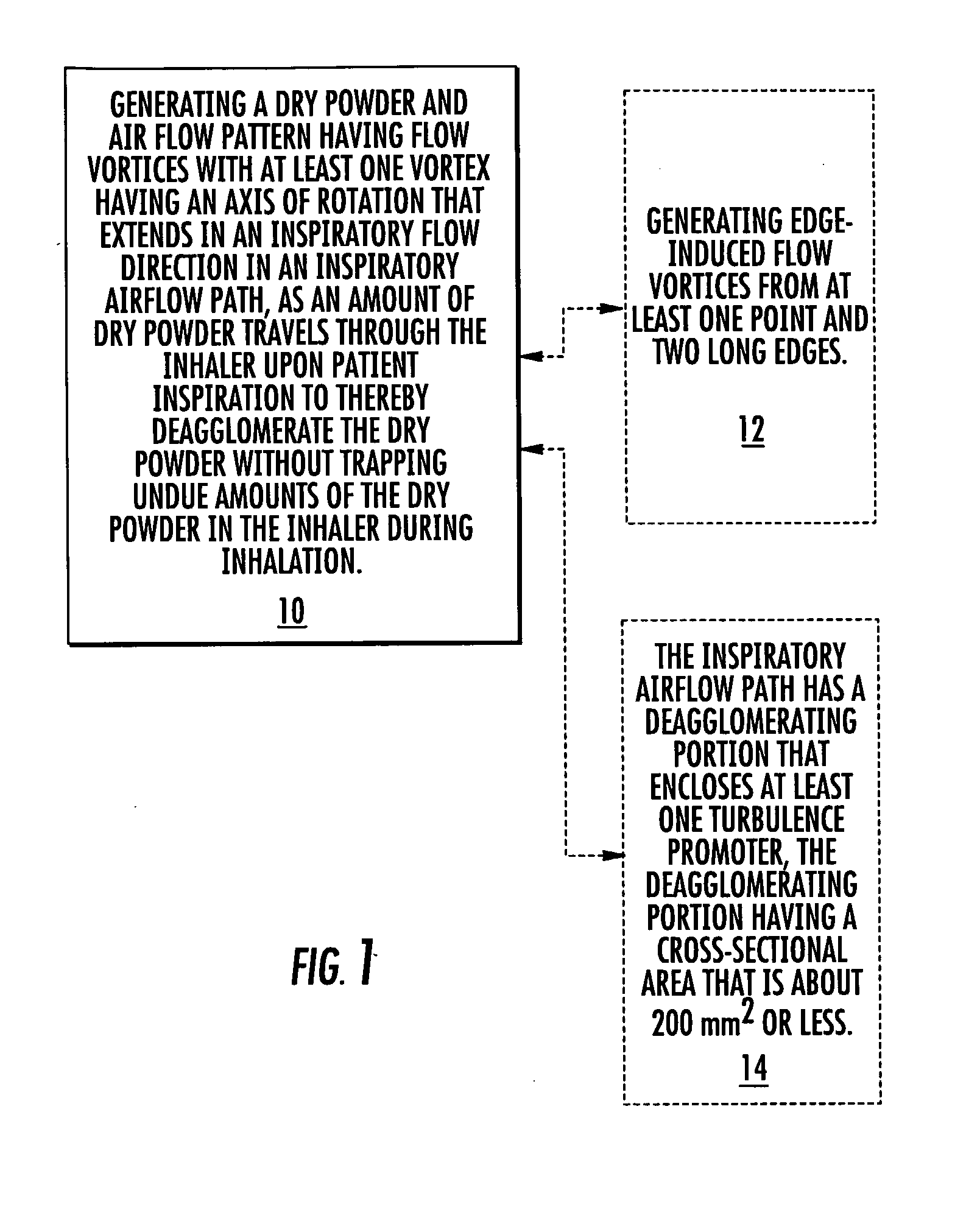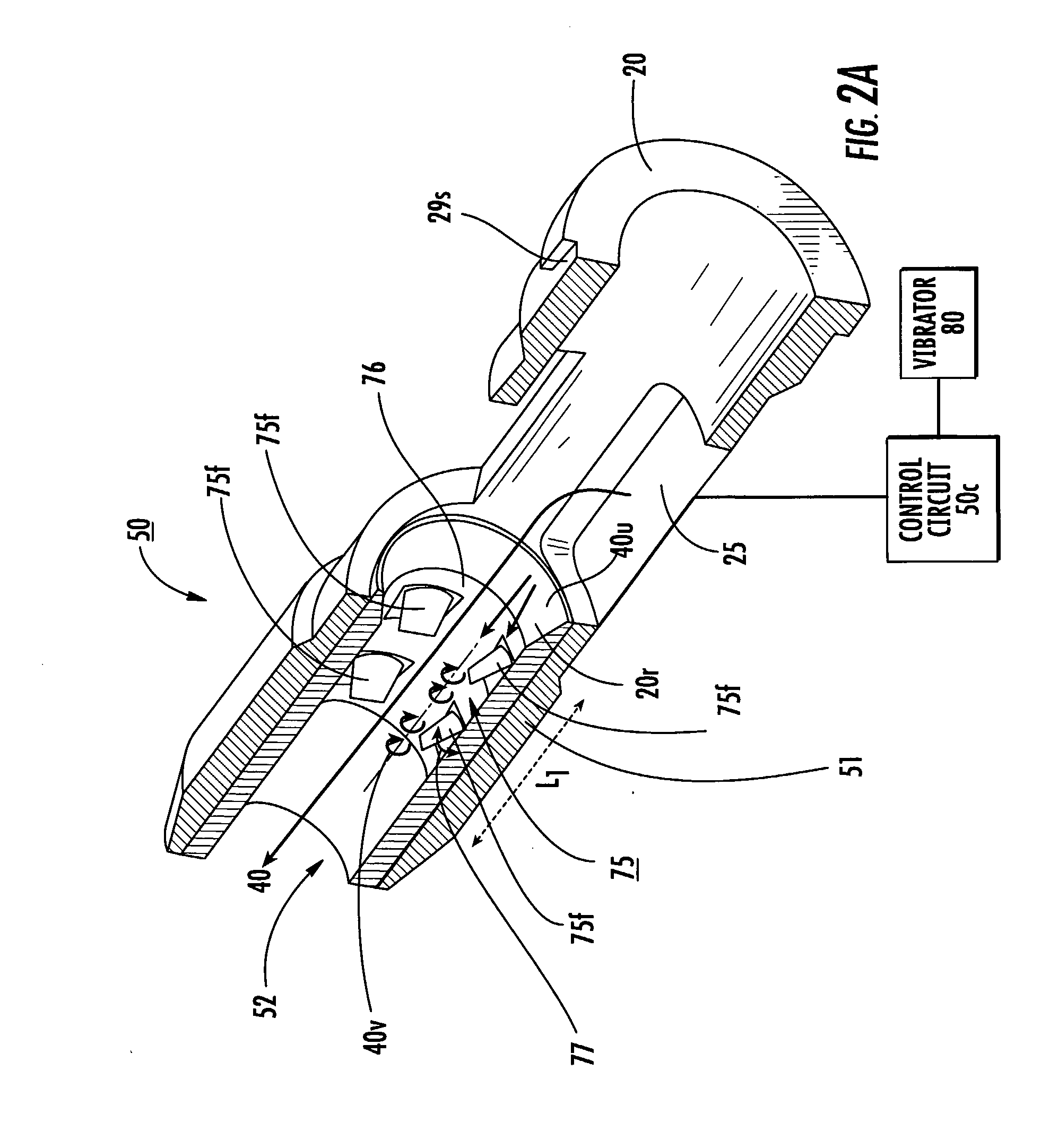Dry Powder Inhalers that Inhibit Agglomeration, Related Devices and Methods
a technology of dry powder and inhaler, which is applied in the field of dry powder inhalers, can solve the problems of poor flow, unsatisfactory impact on the performance of dpi, and non-uniform dispersion, and achieve the effect of facilitating the deagglomeration of dry powder
- Summary
- Abstract
- Description
- Claims
- Application Information
AI Technical Summary
Benefits of technology
Problems solved by technology
Method used
Image
Examples
examples
[0166]FIG. 30 is a graph illustrating the percentage of FPF emitted as a function of resistance (sqrt[cm H2O]) / lpm) (where “lpm” means “liters per minute”) taken under transient flow conditions and plotted for various shapes of fins and mesh configurations described herein with a dry powder formulation of a certain dose amount (taken at 60 lpm, with no vibratory signal). It is noted that the design numbers used in FIGS. 30 and 31 correspond to each other. In addition, the shapes and designs labeled in FIGS. 30 and 31 have been described above in the specification. However, the design numbers used in the graph of FIG. 30 and the table of FIG. 31 do not necessarily represent or correspond to the design numbers or shape numbers (or order) of the fins or mesh previously described above. The same dose amount, type of dry powder and air path size was used to obtain the data shown in FIG. 30.
[0167]It is anticipated that different fin and / or mesh configurations may be used for different for...
PUM
| Property | Measurement | Unit |
|---|---|---|
| area | aaaaa | aaaaa |
| width | aaaaa | aaaaa |
| length | aaaaa | aaaaa |
Abstract
Description
Claims
Application Information
 Login to View More
Login to View More - R&D
- Intellectual Property
- Life Sciences
- Materials
- Tech Scout
- Unparalleled Data Quality
- Higher Quality Content
- 60% Fewer Hallucinations
Browse by: Latest US Patents, China's latest patents, Technical Efficacy Thesaurus, Application Domain, Technology Topic, Popular Technical Reports.
© 2025 PatSnap. All rights reserved.Legal|Privacy policy|Modern Slavery Act Transparency Statement|Sitemap|About US| Contact US: help@patsnap.com



